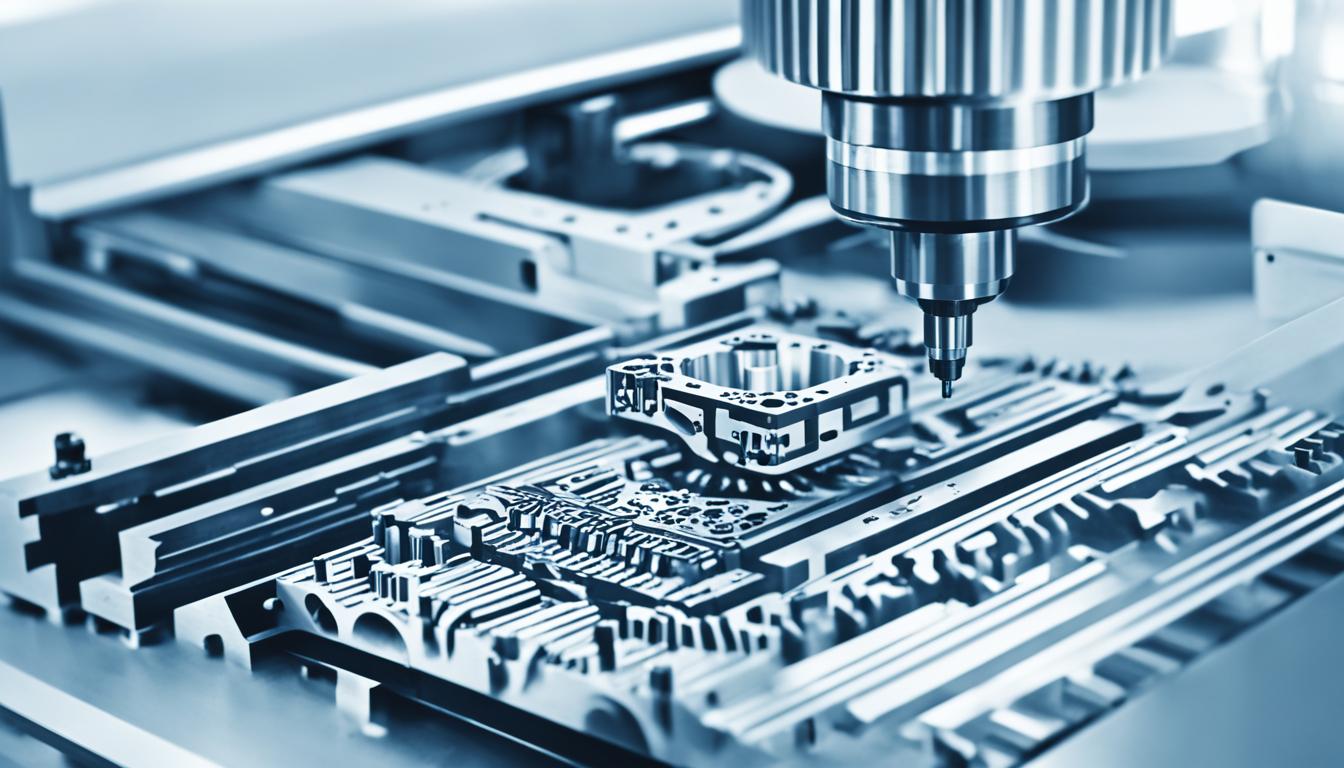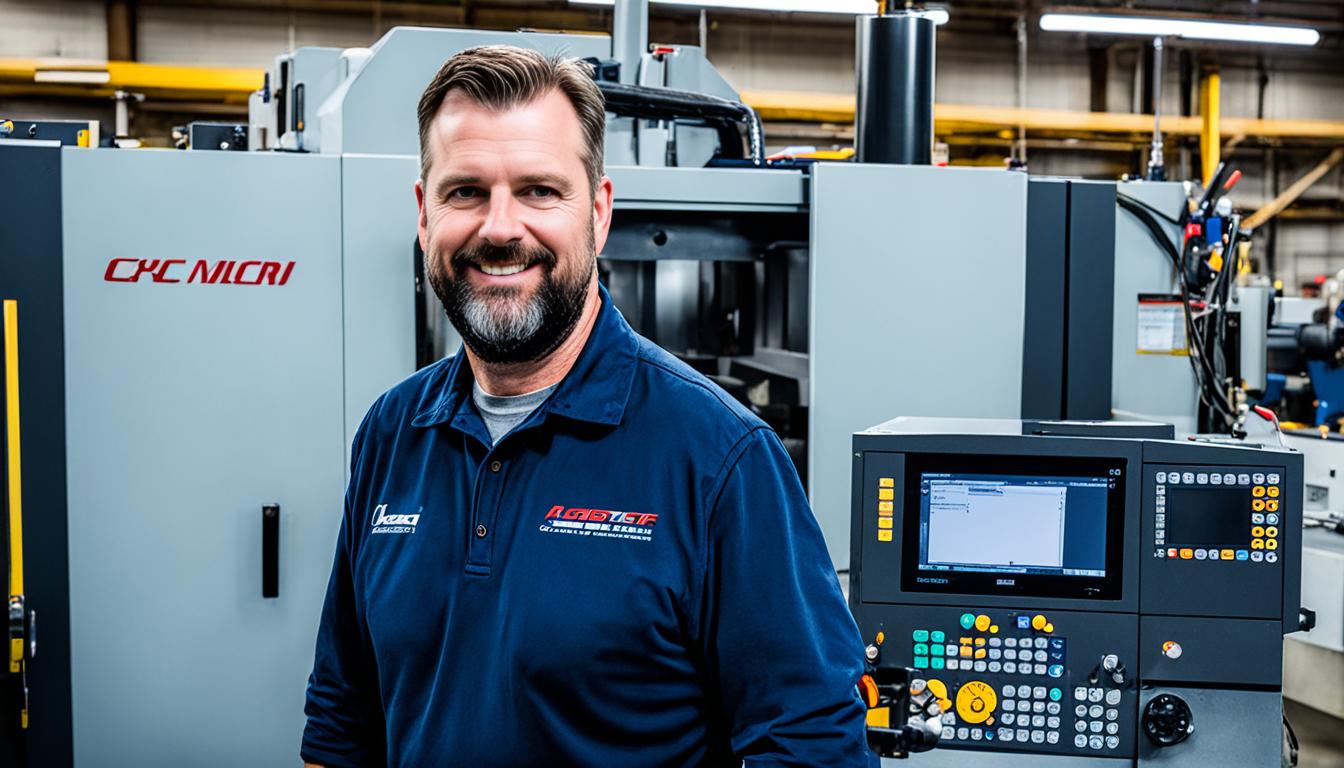CNC Virtual World simulations are revolutionizing programming in the manufacturing industry by providing a risk-free environment for operators to learn, practice, and refine their skills. These advanced digital replicas of CNC machines allow programmers to visualize and test their code before implementation on actual equipment, significantly reducing errors, material waste, and potential machine damage.
The simulations offer real-time feedback, enabling immediate corrections and optimizations of toolpaths and cutting strategies. This virtual approach accelerates the learning curve for new programmers and enhances the efficiency of experienced ones, leading to improved productivity and cost savings. Additionally, CNC simulations facilitate remote collaboration, allowing teams to work on projects from different locations and streamline the design-to-production process. As these virtual environments become more sophisticated, incorporating features like augmented reality and artificial intelligence, they are poised to further transform CNC programming, making it more accessible, precise, and innovative.
- CNC virtual simulations are transforming the field of programming by providing operators with innovative tools and techniques.
- These simulations make CNC programming easier, faster, and more intuitive.
- Virtual simulations offer a realistic and immersive experience, allowing operators to interact with CNC machine tools in a virtual world.
- Operators can program CNC machines without writing traditional code, using gesture-based control and manual machine tool movements.
- Intuitive interfaces, voice control, and real-time feedback are key features of CNC virtual simulations, enhancing the operator’s experience and increasing programming efficiency.
The Need for Intuitive and Easy-to-Use Control Systems
The complexity of operating CNC machine tools, particularly five-axis ones, often requires highly skilled operators with extensive knowledge of programming. However, there is a growing demand for more intuitive and easy-to-use control systems. The Centre for Mechatronics of the West Pomeranian University of Technology has proposed a solution by introducing a technique of manual control and programming for machine tools. This technique allows operators to manually move the machine tool subassemblies, teaching the machine tool the movement trajectory, and saving individual motion sequences in a machining program.
With intuitive control systems and easy-to-use interfaces, operators can navigate and program CNC machine tools more efficiently and effectively. By simplifying the programming process, these systems enable operators to focus on the desired results rather than the intricacies of the programming itself. This not only reduces the learning curve for new operators but also increases productivity and accuracy for experienced ones.
To illustrate the impact of intuitive control systems, consider the following comparison table:
| Traditional Control Systems | Intuitive Control Systems |
|---|---|
| Require extensive programming knowledge | Accessible to operators with diverse skill levels |
| Time-consuming programming process | Streamlined programming process |
| Higher chance of errors | Reduced risk of errors |
| Limited flexibility and adaptability | Enhanced flexibility and adaptability |
| Steep learning curve for new operators | Shortened learning curve for new operators |
As seen in the table above, intuitive control systems offer numerous advantages over traditional systems, making them indispensable tools in the CNC virtual world. These systems empower operators to optimize the potential of CNC machine tools while minimizing complexity and maximizing efficiency.
The Role of Virtual Reality Technology
Virtual reality (VR) technology has become a vital component in the CNC virtual world. Developed by the Centre for Mechatronics of the West Pomeranian University of Technology, the virtual reality system has revolutionized the programming of CNC machine tools. By allowing operators to manually manipulate machine tool subassemblies on a virtual model, this system offers a realistic and immersive programming experience. The VR simulation program takes input from various devices, including digital gloves, limb movement scanners, and a head-tracking system, enabling operators to interact seamlessly with the virtual environment.

Virtual reality technology has unlocked new possibilities for CNC programming. The ability to manipulate virtual machine tool models provides operators with a tangible understanding of the programming process. This hands-on approach promotes a deeper comprehension of the machine’s capabilities, resulting in more precise and efficient programming. Additionally, the immersive nature of virtual reality enhances operator engagement and reduces the learning curve associated with traditional programming methods.
With the emergence of VR programming, operators can visualize and optimize their programming logic before implementing it on physical machines. The virtual environment allows for easy testing and debugging, minimizing errors and mitigating costly mistakes. These advancements in CNC programming not only streamline the development process but also contribute to improved productivity and reduced downtime.
Benefits of Virtual Reality Technology in CNC Programming
- Realistic and immersive programming experience
- Enhanced operator engagement and understanding
- Reduced learning curve
- Easier testing and debugging
- Improved productivity and reduced downtime
Virtual reality technology has undoubtedly transformed the CNC programming landscape. As the industry continues to evolve, the integration of VR programming and virtual machine tool models will play an integral role in advancing efficiency, productivity, and overall programming quality.
| Benefits of VR Technology in CNC Programming | Key Features |
|---|---|
| Realistic and immersive programming experience | Operators can interact with virtual machine tool models, gaining a realistic understanding of programming processes. |
| Enhanced operator engagement and understanding | The immersive nature of VR technology promotes increased engagement and deeper comprehension. |
| Reduced learning curve | Operators can quickly grasp programming concepts and techniques through hands-on VR simulation. |
| Easier testing and debugging | Virtual environments allow for efficient testing and the identification of programming errors. |
| Improved productivity and reduced downtime | Streamlined programming processes lead to enhanced productivity and minimized downtime. |
Programming Without Writing
In the CNC virtual world, operators can program CNC machines without the need to write traditional code. This innovative approach, known as non-written programming, utilizes manual machine tool control and gesture-based programming techniques to enhance the efficiency and accuracy of CNC programming.
By using appropriate gestures, operators can perform various control actions, such as saving or deleting trajectory points, changing tools, and generating G-code. These intuitive gestures allow operators to interact with the virtual machine tool elements and generate the tool trajectory, enabling them to visualize the machining process and make adjustments as needed.
Compared to traditional programming methods, non-written programming offers several advantages. It eliminates the need for operators to have in-depth knowledge of complex programming languages, reducing the learning curve and enabling less experienced operators to efficiently program CNC machines. Additionally, manual machine tool control provides a more hands-on and intuitive approach to programming, enhancing the operator’s understanding of the machining process.
Gesture-based programming in the CNC virtual world not only streamlines the programming process but also improves overall productivity. Operators can quickly generate tool trajectories and visualize the entire machining process in a virtual environment, allowing for better decision-making and error detection before implementing the program on a physical machine. This reduces the risk of costly mistakes and minimizes material waste.
In summary, non-written programming techniques, combined with manual machine tool control and gesture-based programming, are transforming the CNC programming landscape. These advancements in programming technology offer operators a more intuitive and efficient way to program CNC machines, improving productivity and accuracy in the virtual world.
The Importance of Intuition, Voice, and Feedback
In the CNC virtual world, intuitive programming interfaces play a crucial role in enhancing the operator’s experience and increasing programming efficiency. By emphasizing user-friendly interfaces, operators can easily navigate through the virtual reality (VR) environment, effectively executing various functions.
One key aspect of this intuitive programming is voice control. With the ability to interact with the system using voice commands, operators can perform tasks more efficiently and hands-free. Voice control eliminates the need for manual input, allowing operators to focus on the machining process itself.
Real-time feedback is another essential component of the designed system. It provides operators with immediate information about their programming choices and actions, enabling them to make adjustments and improvements on the go. This real-time feedback significantly enhances the programming process’s accuracy and overall efficiency.
Benefits of Intuitive Programming, Voice Control, and Real-Time Feedback
The use of intuitive programming interfaces, voice control, and real-time feedback offers several advantages:
- Increased programming efficiency: Intuitive interfaces and voice control streamline the programming process, reducing the time and effort required to complete tasks.
- Enhanced operator experience: Intuitive interfaces and voice control create a more user-friendly and enjoyable programming environment, increasing operator satisfaction.
- Improved accuracy: Real-time feedback allows for immediate adjustments, minimizing errors and ensuring precise programming results.
- Faster learning curve: Intuitive interfaces and voice control make it easier for operators to learn and adapt to the CNC virtual world, reducing training time and costs.
By combining intuitive programming, voice control, and real-time feedback, operators can optimize their programming workflow, leading to more efficient and accurate CNC machining processes.

Controlling Waste Through CNC Simulation
VERICUT software has revolutionized waste reduction in CNC machining processes. By utilizing advanced CNC simulation capabilities, companies can significantly minimize waste, optimize machining processes, and improve overall efficiency.
One of the key benefits of using VERICUT software is the ability to simulate NC data and verify programming before executing it on a physical machine. This simulation process helps prevent material scrap, machine crashes, and unnecessary power consumption waste. By identifying and addressing potential issues in the virtual environment, operators can make necessary adjustments and avoid costly mistakes.
In addition to waste reduction, VERICUT software offers powerful optimization features that contribute to more efficient programming and reductions in machining cycle times. With the software’s optimization capabilities, companies can achieve higher productivity levels while maintaining quality standards. This not only enhances operational efficiency but also reduces unnecessary resource consumption.
As businesses face increasing pressure to prioritize sustainability, the use of CNC simulation tools like VERICUT becomes crucial in minimizing waste and improving manufacturing processes. The United Nations has called for a global commitment to sustainable practices, and implementing CNC simulation technology aligns with these goals.
Benefits of VERICUT Software for Waste Reduction:
- Minimizes material scrap
- Prevents machine crashes
- Reduces power consumption waste
- Optimizes machining processes
- Shortens machining cycle times
- Enhances operational efficiency
By effectively controlling waste through CNC simulation, companies can achieve significant cost savings, improve production outcomes, and contribute to a more sustainable manufacturing industry. Implementing VERICUT software as part of the CNC programming workflow is a strategic move towards waste reduction and optimization of machining processes.
| VERICUT Software Benefits | Key Features | ||||
|---|---|---|---|---|---|
| Waste Reduction | – Simulate NC data | – Verify programming | – Avoid material scrap | – Prevent machine crashes | – Reduce power consumption waste |
| Optimization | – Optimization capabilities | – Efficient programming | – Machining cycle time reduction | – Higher productivity levels | – Resource consumption reduction |
Optimization Through Force Control
VERICUT Force optimization software is a powerful tool that contributes to waste reduction in CNC machining by maximizing cutting process efficiency. This software analyzes cutting conditions and dynamically adjusts feed rates based on factors such as cutting force, chip thickness, and spindle power. By ensuring optimal cutting conditions and preventing failures, VERICUT Force leads to significant time and power savings, as well as increased tool life.
With VERICUT Force, cutting force optimization becomes a reality, allowing manufacturers to achieve better results with reduced waste. By fine-tuning the machining parameters, operators can minimize material wastage and improve overall efficiency. The software’s ability to enhance tool life is especially valuable, as it reduces the frequency of tool replacements and eliminates unnecessary production interruptions.
Cutting force optimization not only improves productivity but also enhances the quality of machined parts. By maintaining optimal cutting conditions, VERICUT Force helps prevent tool wear and tool breakage, resulting in smoother surfaces and more precise dimensions. This level of control ensures that each component meets the required specifications, minimizing the need for rework or scrap.
In addition to optimizing the cutting process, VERICUT Force provides valuable insights and data that can inform decision-making and process improvement. By analyzing cutting forces and their impact on tool life, manufacturers can identify areas for further optimization or potential issues in the machining process. These insights enable companies to make informed decisions to continuously enhance productivity and reduce waste in CNC machining operations.
With VERICUT Force, manufacturers can achieve significant improvements in efficiency, productivity, and tool life. By optimizing cutting conditions and controlling cutting forces, companies can minimize waste and machining costs while maintaining high product quality. As a result, VERICUT Force is a vital tool for waste reduction in CNC machining, offering tangible benefits to manufacturers seeking to maximize program efficiency and improve sustainability.
Improving Composites Manufacturing
In the world of composites manufacturing, VERICUT offers specialized solutions that bring significant time savings and reduce waste in the production process. By leveraging advanced programming and simulation techniques specific to composites, companies can streamline their operations and achieve greater efficiency and productivity.
One of the key benefits of VERICUT’s composites programming capabilities is the reduction in the need for inspection and rework. Typically, these tasks account for two-thirds of the production time for composite parts. With VERICUT, companies can optimize the programming and simulation of composites components, ensuring a high degree of accuracy and minimizing errors. As a result, the need for costly and time-consuming rework is greatly reduced.
The use of VERICUT software also enables better control over the entire manufacturing process. Companies can simulate and visualize the machining operations for composite parts, allowing for adjustments and optimizations before the actual production begins. This proactive approach helps in identifying any potential issues or challenges early on, resulting in improved efficiency and reduced waste.
With VERICUT’s composites programming capabilities, manufacturers can achieve exceptional time savings and significant reductions in rework. By optimizing their processes and having better control over the manufacturing operations, companies can increase their productivity and overall profitability.
VERICUT Composites Programming Benefits:
- Significant time savings in composites manufacturing
- Reduction in the need for inspection and rework
- Improved efficiency and productivity
- Better control over the manufacturing process
- Minimized waste and increased profitability
Take a look at the table below to see the substantial time savings achieved through VERICUT composites programming:
| Aspect | Time Savings |
|---|---|
| Inspection and Rework | Reduced by two-thirds |
| Machining Optimization | Up to 50% reduction in cycle times |
| Total Production Time | Significant overall reduction |
With the use of VERICUT’s composites programming capabilities, manufacturers can achieve drastic improvements in their operations, resulting in time savings, reduced rework, and increased productivity.
The Future of Sustainable Manufacturing
With businesses facing increasing pressure to address sustainability concerns and meet global goals, waste reduction and sustainable manufacturing practices have become more important than ever. The environmental impact of manufacturing processes cannot be ignored, and companies are actively seeking ways to minimize their footprint.
One avenue for achieving sustainable manufacturing is through the utilization of CNC simulations and optimization tools. By implementing these technologies, companies can effectively minimize or eliminate waste, ultimately making a positive impact on both the environment and their bottom line. CNC simulations enable manufacturers to identify and rectify potential issues in the early stages, avoiding material scrap, costly machine crashes, and unnecessary power consumption.
However, the future of manufacturing goes beyond waste reduction alone. Operating at net zero is the end goal for many businesses. This means not just reducing waste but also implementing processes that revolve around the concept of reducing, reusing, and recycling. By embracing these practices, businesses can not only stay competitive in the ever-evolving marketplace but also actively contribute to a more sustainable future.
In conclusion, sustainable manufacturing practices, such as waste reduction through CNC simulations and the shift towards net zero operations, are crucial for businesses to address environmental concerns. As the world becomes more conscious of the environmental impact, it is essential for companies to prioritize sustainable manufacturing, not only to meet global goals but also to secure their long-term success.
